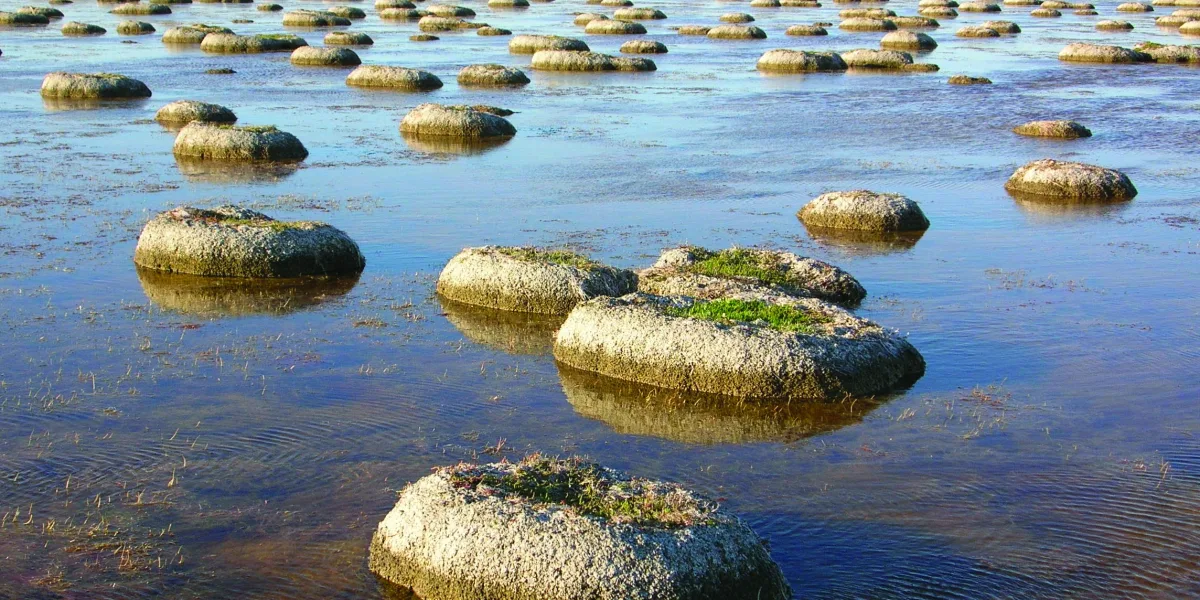The Limestone Coast is home to many types of wetlands
In the Limestone Coast region a wetland can look very different depending on where in the landscape it’s found and its source of water. Familiar, iconic and sometimes even hidden, wetlands are a treasured part of our landscape.
The Limestone Coast Landscape Board encourages you to enjoy the fantastic wetlands the region has to offer on your next adventure.
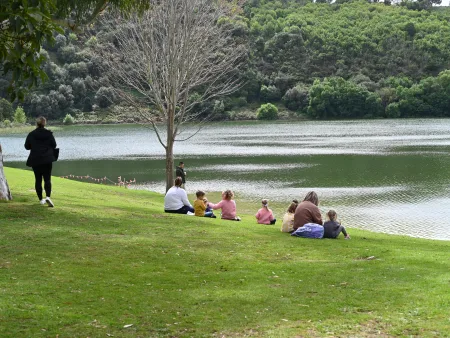
Freshwater lakes can provide fun and adventure
Visiting freshwater lakes in the Limestone Coast such as the Valley Lake, Lake Edward and Lake Leake you will often find a hive of recreational activities taking place! From fishing to water sports these lakes attract locals and tourists.
Generally deeper than two metres, permanent freshwater lakes keep their water levels year round. The stability of the water provides an environment for aquatic life to thrive.
You will often find a diverse range of plants and animals fringing the edges of these lakes such as river red gum (Eucalyptus camaldulensis) and water-ribbons (Triglochin species) enhancing the beautiful surroundings.
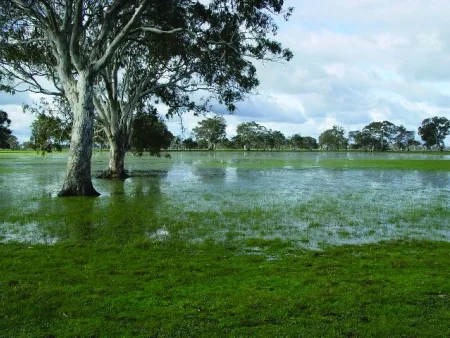
Meander through a freshwater meadow this winter
With enough rainfall each winter these freshwater meadows emerge in our landscape. Often referred to as ‘puddles in paddocks’ they are shallow and full of lush grasses. Outside of winter and spring you wouldn’t even know they existed. They rely on seasonal conditions to surface in our landscape and are an iconic feature of the winter and spring months.
Look out for these wetlands in the Nangwarry, Penola, and Dismal Swamp areas. They also appear in the Topperwein Native Forest Reserve and Mary Seymour and Big Heath Conservation Park.
Freshwater meadows are important nesting grounds for swans and ducks but also unique waterbirds such as brolgas. Many frog species also make these wetlands ribbiting!
Freshwater meadows are often fringed with river red gums (Eucalyptus camaldulensis), markers for where they will re-emerge in our landscape each year. Running marsh flower (Villarsia reniformis), southern water-ribbons (Triglochin species), twig rushes (Baumea species) and white purslane (Montia australiasica) are plants that also thrive.
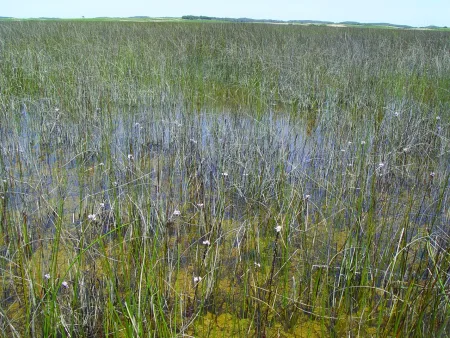
Get out and explore the grassy sedge wetlands
You will hear abundant critters and insects in the grassy edges of these wetlands making them feel full of life. Edges full of dense grass clumps provide a feeding ground for waterbirds such as brolgas, ducks and swans.
Towering above the water’s edge the sturdy stalks of the common reed (Phragmites australis) provides refuge for wildlife. Prickly tea tree (Leptospermum continentale) and the dainty running marsh flowers (Villarsia reniformis) provide blossoms in the springtime.
Iconic to the Limestone Coast, permanent grass sedge wetlands exist due to shallow groundwater beneath them. Keep an eye out for these wetlands in the areas around Honan’s complex, the Marshes, Lake Hawdon North and South and Lake Frome.
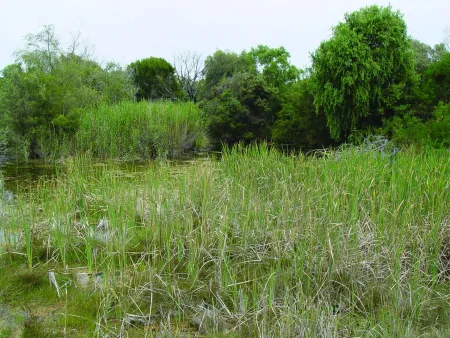
The secrets of soaks and springs
These are some of the most distinctive and unique wetlands in the Limestone Coast and develop where groundwater seeps out onto the surface. They can be there all year round or seasonal depending on their access to groundwater.
Found mostly along the coast you will see examples of these wetlands at Pick Swamp and Middlepoint (Pascoes) Swamp.
When visiting these globally rare springs it is interesting to note they are made up of peat soil. Peat soil is made up of the remnants of old plants. The spongy texture of the soil is like a time capsule with a history of ancient plants underfoot.
Plants such as silky tea tree (Leptospermum lanigerum), bottlebrush tea tree (Melaleuca squarrosa) and common reed grow in abundance around these wetlands.
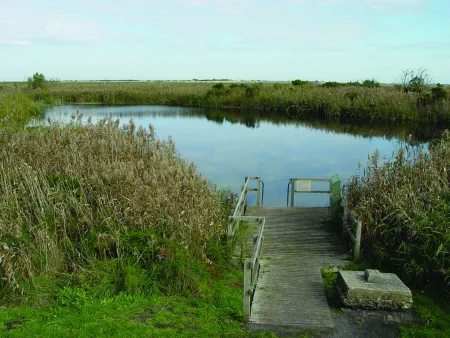
The magic of a karst wetland
As water feeds through the limestone it dissolves over time to create the magic of a karst wetland.
Iconic to the Limestone Coast these wetlands are completely dependent on groundwater. They are renowned for their crystal clear water and impressive underwater vegetation. Well known wetlands to the region include Piccaninnie Ponds and Ewen Ponds. They provide valuable information into our regional groundwater levels and how they are changing over time.
The beauty of these wetlands goes well beneath the surface. A world teeming with life. Aquatic plants such as Chara and Nitella species gently sway in the current. Silky tea tree (Leptospermum lanigerum), common reed (Phragamites australis) and cumbungi (Typha species) create vegetation on the water’s edge.
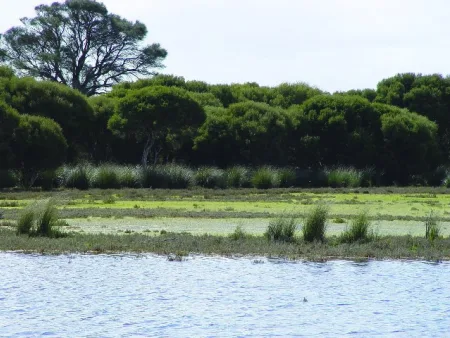
Salty havens of the Limestone Coast
The iconic salt lakes found predominately in the Upper Limestone Coast are full of dissolved salts.
With a high saline concentration, waterbirds enjoy visiting these wetlands. You will find a diversity of birds located in the grassy edges enjoying the abundance of food it provides for them.
You can visit these wetlands at Salt Lake, Butchers Lake, Lake Eliza George and St Claire.
With tough plant species such as samphire (Halosarcia species), glassworts (Sarcocornia species) and tassel grass (Ruppia species) the surroundings of these lakes are a sight to be seen.
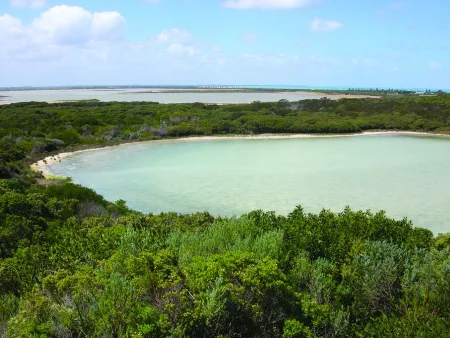
Discover the dunes
Come and discover the coastal dune wetlands of the Limestone Coast. This hidden world of water is waiting to be found! You will typically find these wetlands within or adjacent to sand dunes along the coast. These open bodies of water are reliant on groundwater.
Vegetation in these wetlands is adapted to fluctuating water levels. Plants that call the dunes home include running marsh flower (Villarsia reniformis), southern water-ribbons (Triglochin species), twig rushes (Baumea species), white purslane (Montia australiasica) and cutting grass (Gahnia species).
You can see these wetlands around Robe and Nora Creina.
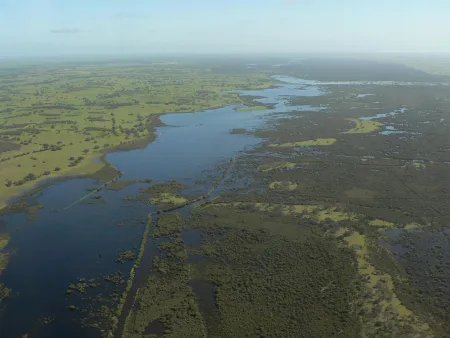
Interesting interdunal wetlands
You will often find these wetlands hidden amongst depressions in the landscape. These depressions have been formed through erosion, abrasion and tidal action which happens over centuries. Shaping the dynamic and ever changing coastal landscape.
Nestled in low-lying areas or where depressions form these shallow waters are filled by surface water. The depressions are found inland away from the scenic sandy dunes. They act as an evaporation basin as the water is collected.
Providing a more stable water level these wetlands support a wide variety of plants and animals. These hidden oasis play a vital role in the landscape providing food and shelter for the creatures that call these wetlands home.
You can visit this type of wetland at Tilley’s Swamp.
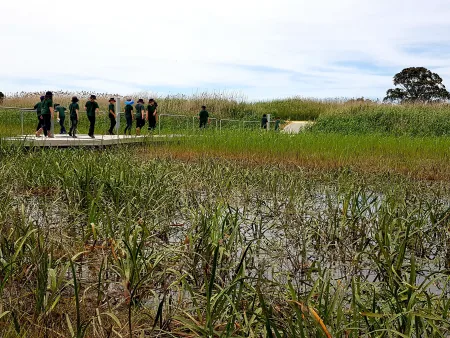
The river’s end
A terminal lake marks the end of a river or creek system. With no natural outlet the water creates a basin and will usually evaporate or seep into the ground.
You may find a terminal lake retains water for several years following a filling event. The water is often brackish and supports a wide variety of plant and animals.
Visiting Bool Lagoon and Cockatoo Lake in the upper Limestone Coast will give you a beautiful experience of this type of wetland. You will find water-ribbons (Triglochin species) and river red gum (Eucalyptus camaldulensis) and an abundance of birdlife at these sites.
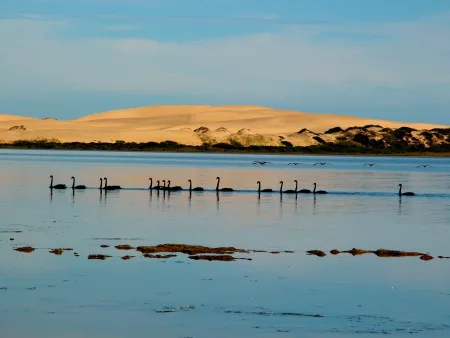
Where freshwater meets the sea
Formed where freshwater meets the sea, estuaries create a transition zone between freshwater and saltwater. Many fish species call this water body home, spending part of their lifecycle in the sea and part in freshwater.
Estuaries are full of essential habitat for wildlife. The level of salinity is highly variable due to oceanic influence from tides and waves.
The Coorong is the largest estuary in the Limestone Coast. Keep an eye out for this large body of water as you drive along the coast past Kingston.
